Monthly Archives: June 2019

 My nephew, Garrett Stevens has had a great year. It has been a year of great change for him and his wife, Kayla, who welcomed their first child on August 3, 2018. Their daughter, Elliott has been the answer to prayer for both of them. For as long as I can remember, Garrett has loved kids, and Kayla has too. Now that he has a child of his own, Garrett is on cloud nine. He is a great dad, and a great husband.
My nephew, Garrett Stevens has had a great year. It has been a year of great change for him and his wife, Kayla, who welcomed their first child on August 3, 2018. Their daughter, Elliott has been the answer to prayer for both of them. For as long as I can remember, Garrett has loved kids, and Kayla has too. Now that he has a child of his own, Garrett is on cloud nine. He is a great dad, and a great husband.
This summer has been a busy one for Garrett and Kayla. Kayla was a bridesmaid in a wedding earlier that took the family to Huntington Beach, California. They had a great time enjoying the sun and sand. They went sight seeing, and just had a great vacation. This past weekend, Kayla had to go out of town for the weekend, and so Garrett found himself being Mister Mom. I think he would have had no problem taking care of Elliott alone, but he wanted to give his mom a chance to join in, and since it was Elliott’s first time away from her mommy, Garrett might have been just a little bit nervous. Having his mom there would help, in the event that Elliott was fussy. He needn’t have worried. It all went very well, and Garrett and his mom had a good visit too. It was a sweet gift he could give to his mom, my sister, Alena Stevens.


Garrett has been working hard, and making great strides in his career too. Garrett took after his grandpa, my dad, Allen Spencer, when he decided to become a welder. Garrett went to college for his chosen field, and he is very good at it. Garrett works at EMIT Technologies, Inc in Sheridan. Kayla told me that Garrett made her very proud yesterday, when he won an award for his work. She told me that Garrett’s boss, Will said that he has never seen a new hire come in and hit the ground running as hard as Garrett has and he was impressed with how Garrett is making changes to products to make them better!! Compliments from bosses just don’t get better than that. Today is Garrett’s birthday. Happy birthday Garrett!! Have a great day!! We love you and we’re very proud of you!!
 My cousin, Shirley Cameron is what can only be call a Modern Pioneer Woman. Not many people were living off the grid when she and her parents and brother moved to their mountain top in Washington state. They built 3 cabins. Her brother later moved to town, but her parents, Ruth and Jim, lived there for the rest of Ruth’s life and until fire destroyed their cabin, and Jim, who suffered from Alzheimer’s Disease had to be moved to a nursing home, where he lived out the remainder of his days. That left Shirley and her husband Shorty, and their grandson Tyrel living off the grid on the top of Wolfe Mountain.
My cousin, Shirley Cameron is what can only be call a Modern Pioneer Woman. Not many people were living off the grid when she and her parents and brother moved to their mountain top in Washington state. They built 3 cabins. Her brother later moved to town, but her parents, Ruth and Jim, lived there for the rest of Ruth’s life and until fire destroyed their cabin, and Jim, who suffered from Alzheimer’s Disease had to be moved to a nursing home, where he lived out the remainder of his days. That left Shirley and her husband Shorty, and their grandson Tyrel living off the grid on the top of Wolfe Mountain.
After Shorty’s passing, in 2016, Shirley and Tyrel live up there alone. Oh they have  neighbors, down the mountain, and Tyrel’s mom lives not too far away, but in town. Shirley and Tyrell just like living in the wilderness far from civilization. I really don’t think Shirley will ever leave her mountain. The views up there are breathtaking, and she gets to see lots of wild animals. Nevertheless, winter can be long and lonely. There are times when getting off the mountain just isn’t going to happen, because the snow is too deep. They have to have enough food to last for a very long time, because running out of food would be bad. There is a well, so water is not a problem, and they use a generator for electricity, so they do have to have enough fuel to run that. Still, summer will come around again, and everything is renewed.
neighbors, down the mountain, and Tyrel’s mom lives not too far away, but in town. Shirley and Tyrell just like living in the wilderness far from civilization. I really don’t think Shirley will ever leave her mountain. The views up there are breathtaking, and she gets to see lots of wild animals. Nevertheless, winter can be long and lonely. There are times when getting off the mountain just isn’t going to happen, because the snow is too deep. They have to have enough food to last for a very long time, because running out of food would be bad. There is a well, so water is not a problem, and they use a generator for electricity, so they do have to have enough fuel to run that. Still, summer will come around again, and everything is renewed.
 These days, more and more people are living off the grid. It has become almost “fashionable” for people to get away from the city and all of its ties to utilities, phones, and water. With cell phones, people can still be connected to a degree, if they choose to be, but they can also shut it off when they don’t want to be connected. I think Shirley likes to be disconnected sometimes. It gives her time with her own thoughts. Being a modern day pioneer woman is not a way of life for the faint of heart. A person has to be comfortable in their own company. I don’t know if it would be something I could handle, but Shirley has done well with it, and I commend her for it. Today is Shirley’s birthday. Happy birthday Shirley!! Have a great day!! We love you!!
These days, more and more people are living off the grid. It has become almost “fashionable” for people to get away from the city and all of its ties to utilities, phones, and water. With cell phones, people can still be connected to a degree, if they choose to be, but they can also shut it off when they don’t want to be connected. I think Shirley likes to be disconnected sometimes. It gives her time with her own thoughts. Being a modern day pioneer woman is not a way of life for the faint of heart. A person has to be comfortable in their own company. I don’t know if it would be something I could handle, but Shirley has done well with it, and I commend her for it. Today is Shirley’s birthday. Happy birthday Shirley!! Have a great day!! We love you!!

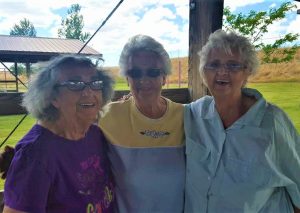 My aunt, Virginia Beadle is a woman of resilience. There are still a few of those around. They are the people who face adversity head on and fight their way back to health with strength and courage. As people age, sometimes their health can suffer. Aunt Virginia is turning 89 years today. Her mind isn’t as sharp as it once was, and her body shows definite signs of weakening that comes with the years, but her spirit…her essence…the beautiful lady that her family has always loved is still there, and still just as beautiful as her sweet face.
My aunt, Virginia Beadle is a woman of resilience. There are still a few of those around. They are the people who face adversity head on and fight their way back to health with strength and courage. As people age, sometimes their health can suffer. Aunt Virginia is turning 89 years today. Her mind isn’t as sharp as it once was, and her body shows definite signs of weakening that comes with the years, but her spirit…her essence…the beautiful lady that her family has always loved is still there, and still just as beautiful as her sweet face.
There have been times in the last year or so that her body has betrayed her to a degree, and she has spent some time in the hospital and a nursing home, but she works hard to get her strength back with the hope of going home. It’s hard to say if the nursing home will become permanent, as it did for my mother-in-law in her final five years, but I can tell you that the love that Aunt Virginia’s kids have for her will never die, because they would give anything to keep her home. They have shown this in the care they have given her in the past few years. Aunt Virginia know that and feels the blessing of that love. They would give her the moon if they could, but all they can give her is their love, and that is what they have done. That is to be commended.
Aunt Virginia worked hard all her life to give her kids the best she could. Life wasn’t always easy, but she was resilient. She never gave up. If hard work could make a good life or her family…well, she worked hard. I 
 remember how beautiful Aunt Virginia looked when she was getting off or going to work. She was always dressed up and she had style, but more than that, she was good at her job. These days her mind might not be as sharp, but when she worked, she “rocked” it. She has earned her retirement, and the love of her family. She may be older now, but she is still the beautiful lady we all know and love…inside and out. Today is Aunt Virginia’s 89th birthday. Happy birthday Aunt Virginia!! Have a great day!! We love you!!
remember how beautiful Aunt Virginia looked when she was getting off or going to work. She was always dressed up and she had style, but more than that, she was good at her job. These days her mind might not be as sharp, but when she worked, she “rocked” it. She has earned her retirement, and the love of her family. She may be older now, but she is still the beautiful lady we all know and love…inside and out. Today is Aunt Virginia’s 89th birthday. Happy birthday Aunt Virginia!! Have a great day!! We love you!!
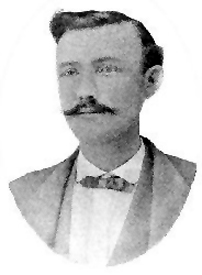 Gunfighters were a big part of what we think of when we think of the Old West. The reality is that there were probably a lot less gunfights that we have been led to believe, and most were not held in the way that we all think. Many were quickly started when tempers flared, and then over in a moment. The whole meeting on “Main Street at high noon” thing didn’t happen very much. Nevertheless, gunfighters were a part of the Old West and many were truly mean and evil people.
Gunfighters were a big part of what we think of when we think of the Old West. The reality is that there were probably a lot less gunfights that we have been led to believe, and most were not held in the way that we all think. Many were quickly started when tempers flared, and then over in a moment. The whole meeting on “Main Street at high noon” thing didn’t happen very much. Nevertheless, gunfighters were a part of the Old West and many were truly mean and evil people.
William “Texas Billy” Thompson (1845-1897), was the brother of the more famous gunman Ben Thompson. Apparently Billy felt the need to live up to an surpass his brother’s reputation. Billy was often described as “mean, vicious, vindictive and totally unpredictable.” Billy and his brother, Ben emigrated from Yorkshire, England with their family to Austin, Texas in 1851, when he was just a boy. When the Civil War began, both men enlisted in the Texas Mounted Rifles. After the war, there were a number of federal troops who remained in Texas for several years, which annoyed the people of Texas. In March, 1868, Billy was involved in a gunfight with a Private William Burk. After killing the soldier, Billy fled the area. Two months later, Billy killed another man in Rockport, Texas and when a warrant was issued for his arrest, he was on the run again, first to Indian Territory and then to Kansas.
While in Abilene, Kansas, Billy met a dance hall girl and prostitute named Elizabeth “Libby” Haley. Haley went by the alias of “Squirrel Tooth Alice.” The two quickly began an affair that would eventually lead to marriage and nine children. Billy made his living as a gambler. He and his brother Ben, were living in Ellsworth, Kansas in April, 1873. Four months later, in August, Billy’s temper got the best of him again, and killed Sheriff Chauncey Whitney. He was on the run again.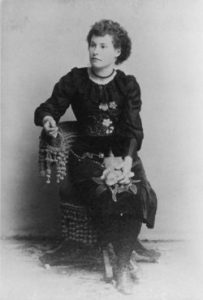
Billy had a reputation for constantly being trouble for one thing or another. This meant that Billy and Libby were constantly moving. The Texas Rangers finally caught up with Billy in October 1876, and was extradited to Kansas. Amazingly, he was acquitted of the murder of Sheriff Whitney. He must have had a great attorney, because everyone knew he did it. Billy made his way to Dodge City, Kansas. There is also evidence that places him in Colorado and Nebraska, before he and Libby finally settled down in Sweetwater, Texas. He purchased and worked a ranch, while she established a brothel in town. In 1884, he was reportedly in San Antonio and witnessed his brother being gunned down by assassins. Billy took no revenge on his brother’s killers. Maybe he had lost his taste for killing and running. On September 6, 1897, William Thompson died from a stomach ailment at the age of 52.
 Nurses are the cornerstone of medicine in many cases. Yes, we must have doctors, but nurses are the support system that allows doctors to do their jobs. One such example was a woman named Mary Ann Bickerdyke. She was born on July 19, 1817 in Knox County, Ohio, to Hiram and Annie (Rodgers) Ball. She was married in 1847 to Robert Bickerdyke. The couple and their family moved to Galesburg, Illinois. After her infant daughter died suddenly, she vowed to learn more about medicine, studying herbal medicine at Oberlin College. Mary Ann was widowed in 1859. She was alone and the mother of two sons, who were in their adolescent years.
Nurses are the cornerstone of medicine in many cases. Yes, we must have doctors, but nurses are the support system that allows doctors to do their jobs. One such example was a woman named Mary Ann Bickerdyke. She was born on July 19, 1817 in Knox County, Ohio, to Hiram and Annie (Rodgers) Ball. She was married in 1847 to Robert Bickerdyke. The couple and their family moved to Galesburg, Illinois. After her infant daughter died suddenly, she vowed to learn more about medicine, studying herbal medicine at Oberlin College. Mary Ann was widowed in 1859. She was alone and the mother of two sons, who were in their adolescent years.
Widowed just two years before the Civil War began, she supported herself and her sons by practicing as a “botanic physician” in Galesburg. When a young Union volunteer physician wrote home about the filthy, chaotic military hospitals at Cairo, Illinois, the citizens of Galesburg collected $500 worth of supplies and selected Bickerdyke to deliver them. She left her sons with a neighbor, and after seeing the horrible conditions for herself, Bickerdyke decided that she was needed there, so she stayed as an unofficial nurse. Her never ending energy, and her dedication made her just the heroine the Union soldiers needed in those awful war years. She organized the hospitals and cleaned up the filth that served only to breed germs, and in doing so, she gained the respect and appreciation of Ulysses S. Grant.
While there, she worked alongside another famed Civil War Nurse, Mary J. Stafford. When Grant’s army moved down the Mississippi River, Bickerdyke went too, becoming the Chief of Nursing and setting up hospitals where 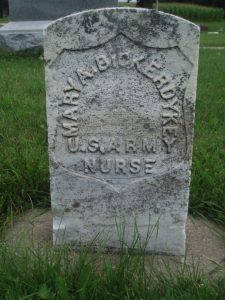 they were needed. Bickerdyke’s goal during the Civil War was to more efficiently care for wounded Union soldiers. She insisted on cleanliness, was dedicated to improving the level of care, and unafraid of stepping on male toes. That, in itself, was almost unheard of in that era. She was adamant about scrubbing every surface in sight, reported drunken physicians, and on one occasion ordered a staff member, who had illegally appropriated garments meant for the wounded, to strip. Though she antagonized male physicians, staff, and soldiers alike, in the name of better patient care, she won most of her battles…a good thing for the wounded soldiers.
they were needed. Bickerdyke’s goal during the Civil War was to more efficiently care for wounded Union soldiers. She insisted on cleanliness, was dedicated to improving the level of care, and unafraid of stepping on male toes. That, in itself, was almost unheard of in that era. She was adamant about scrubbing every surface in sight, reported drunken physicians, and on one occasion ordered a staff member, who had illegally appropriated garments meant for the wounded, to strip. Though she antagonized male physicians, staff, and soldiers alike, in the name of better patient care, she won most of her battles…a good thing for the wounded soldiers.
Union General William T. Sherman was especially fond of the volunteer nurse who followed the western armies. It is said that she was the only woman he would allow in his camp. When his staff complained about the outspoken, insubordinate female nurse who constantly disregarded the army’s red tape and military procedures, Sherman threw up his hands and exclaimed, “Well, I can do nothing for you, she outranks me.” Running roughshod over anyone who stood in the way of her self-appointed duties, when a surgeon questioned her authority to take some action, she replied, “On the authority of Lord God Almighty, have you anything that outranks that?” I guess Sherman was right when he said that she outranked him.
To the wounded soldiers, Bickerdyke was an angel. They affectionately called her “Mother” Bickerdyke, and she called them her “boys.” The soldiers would cheer here when she appeared. She was more loved than the celebrities of our day are for some fans. During the war, she worked closely with Eliza Emily Chappell Porter of the Northwest Sanitary Commission, worked on the first hospital boat, helped build 300 hospitals and aided the wounded on 19 battlefields including the Battle of Shiloh, the Battle of Vicksburg, and Sherman’s March to the 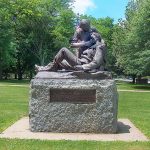 Sea. When the war was over, she rode at the head of the XV Corps in the Grand Review in Washington at General William T. Sherman’s request. Afterwards, she worked for the Salvation Army in San Francisco, and became an attorney, helping Union veterans with legal issues. Later, she ran a hotel in Salina, Kansas for a time before retiring to Bunker Hill, Kansas. She received a special pension of $25 a month from Congress in 1886. She died peacefully after a minor stroke November 8, 1901. Her remains were transported back to Galesburg, Illinois and she was interred next to her husband at the Linwood Cemetery. In memory of Bickerdyke’s selflessness, a statue of her was erected in Galesburg, Illinois. Two ships…a hospital boat, a liberty ship, and a cemetery in Kansas were named after her.
Sea. When the war was over, she rode at the head of the XV Corps in the Grand Review in Washington at General William T. Sherman’s request. Afterwards, she worked for the Salvation Army in San Francisco, and became an attorney, helping Union veterans with legal issues. Later, she ran a hotel in Salina, Kansas for a time before retiring to Bunker Hill, Kansas. She received a special pension of $25 a month from Congress in 1886. She died peacefully after a minor stroke November 8, 1901. Her remains were transported back to Galesburg, Illinois and she was interred next to her husband at the Linwood Cemetery. In memory of Bickerdyke’s selflessness, a statue of her was erected in Galesburg, Illinois. Two ships…a hospital boat, a liberty ship, and a cemetery in Kansas were named after her.

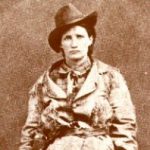 The Gold Rush affected many states and many people. Everyone headed west to try their luck, hoping to strike it rich. While the big strikes seemed to be in California, the Black Hills, and Alaska, there were many other places where miners struck it rich…and just as many where the miners went bust. It takes a special group of people to persevere in the gold rush years, and many went home broke, or found another way to cash in on the god rush, such as stores where the miners could buy supplies, or saloons, where they could drown their sorrows.
The Gold Rush affected many states and many people. Everyone headed west to try their luck, hoping to strike it rich. While the big strikes seemed to be in California, the Black Hills, and Alaska, there were many other places where miners struck it rich…and just as many where the miners went bust. It takes a special group of people to persevere in the gold rush years, and many went home broke, or found another way to cash in on the god rush, such as stores where the miners could buy supplies, or saloons, where they could drown their sorrows.
Wyoming had it’s share of gold mines and gold strikes too. Atlantic City was located in west central Wyoming, it was one of three mining towns in the area. The others were South Pass City, and Hamilton City. These towns sprung up as a result of the gold discovery at Spring Gulch in 1867. Hamilton City is located about three miles east of Atlantic City, but it could prove very difficult to locate, because early on in the town’s history, the townspeople unofficially renamed it to Miners Delight after the area’s largest and most productive mine, which carried the same name and was located on Peabody Hill.
The Miners Delight mine was founded by Jonathan Pugh. After a while, the town was officially changed to Miners Delight, since no one called it Hamilton City anyway. At first the mine was a rich enough producing mine to warrant a 10-stamp mill to be erected to crush the rock. The first mention of the town in newspapers appeared in July 1868 with the Sweetwater Mines newspaper describing it as: “…some thirty buildings are up, and more in course of construction. Spring Gulch is turning out the bright ore in very comfortable quantities,” and continues “Ten companies are at work in Spring Gulch…and all appear content with the result of their labors.”
Strangely, the owners of the Miners Delight mine found that recovering gold is more expensive than the gold is worth. After a short few years, the town’s population fell dramatically from its peak of some 75 residents. The Miners Delight Mine shut down in 1874, but soon reopened again…only to close again in 1882. The mining camp would endure good times and bad times over the next several decades, including the Great Depression. Over the years the mine produced over $5 million in gold ore…a relatively small amount as gold goes. The town was inhabited as late as 1960, but today it is nothing but abandoned ruins.
If you go there, you can expect to see rusting iron equipment, such as this old stove, and a couple of iron box screens, around the cabins of Miners Delight, Wyoming. It all seems like nothing much, but in the town’s heyday, it was even home to a couple of famous residents. Henry Tompkins Paige Comstock, would later discover the famous Comstock Lode in Nevada, and a young orphaned girl named Martha Jane Canary, who became known a Calamity Jane. As a child, Marth was adopted and moved with her new parents to Miners Delight. She liked the wild life in both Atlantic City and Miners Delight, and then in Deadwood, South Dakota.
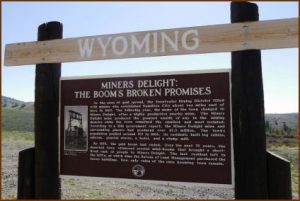
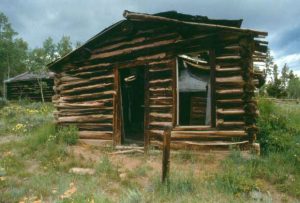 Today, the site is located on Bureau of Land Management property. Some preservation work has been done in order to keep the few remaining buildings standing, but the site is not being restored. Miners Delight is listed on the National Register of Historic Places. The site continues to preserve several cabins, one building that was said to have been a saloon, a baker, a barn, and a couple of outhouses. They are the last remnants of a long ago era.
Today, the site is located on Bureau of Land Management property. Some preservation work has been done in order to keep the few remaining buildings standing, but the site is not being restored. Miners Delight is listed on the National Register of Historic Places. The site continues to preserve several cabins, one building that was said to have been a saloon, a baker, a barn, and a couple of outhouses. They are the last remnants of a long ago era.

 My niece, Kayla Stevens is first and foremost a wife to my nephew, Garrett, and a mom to their daughter, 10 month old Elliott Michelle. Being a mom is a dream come true for Kayla, and she is having the time of her life. She and Elliott are very close, and now that the weather is nicer, they have been going on walks every evening after Kayla gets off work. It’s their mother daughter time. Kayla is a great mom, and Elliott is a happy, healthy baby girl, who is full of smiles.
My niece, Kayla Stevens is first and foremost a wife to my nephew, Garrett, and a mom to their daughter, 10 month old Elliott Michelle. Being a mom is a dream come true for Kayla, and she is having the time of her life. She and Elliott are very close, and now that the weather is nicer, they have been going on walks every evening after Kayla gets off work. It’s their mother daughter time. Kayla is a great mom, and Elliott is a happy, healthy baby girl, who is full of smiles.
Kayla has been busy this summer being a bridesmaid for her friend Hannah’s wedding in Huntington Beach, California. The whole family went and had a great time. It was Elliott’s first vacation, and they made some great memories there. Kayla will be a bridesmaid in two more weddings this summer, so the summer is shaping up to be quite busy. Weddings are always fun, and for Kayla to be able to help celebrate with her friends is awesome.
A couple of weeks ago, Kayla started a new job at the VA Hospital in Sheridan, Wyoming on their suicide prevention task force. She has worked hard both studying to become a social worker and in her prior job, but I think that this is going to be the culmination of the vision she had for her career. So far she likes her new job. I think is takes a special kind of person to deal with the stresses and problems of other people, but Kayla has a heart for that, and I know that she is a blessing both to her coworkers and her patients.
Kayla’s family all live in Sheridan, and she still has all four of her grandparents, so her little family has been 
 spending lots of time with all of them. They have started a tradition of getting together for lunch after church on Sundays with a lot of the family joining in. They also go to Kayla’s parents, Lynette and Wes Smiley’s house in the country for dinner on the weekends. Elliott loves to look at the cows and horses. Also, now that the weather is nice, they have been able to come to Casper to visit Garrett’s family, my sister, Alena and her husband Mike, as well as his sisters Michelle and Lacey. Alena and Mike have also had more opportunities to go to Sheridan to visit. Its a busy life in so many ways, but Kayla and Garrett feel very blessed with their little family, and their extended families. Today is Kayla’s birthday. Happy birthday Kayla!! Have a great day!! We love you!!
spending lots of time with all of them. They have started a tradition of getting together for lunch after church on Sundays with a lot of the family joining in. They also go to Kayla’s parents, Lynette and Wes Smiley’s house in the country for dinner on the weekends. Elliott loves to look at the cows and horses. Also, now that the weather is nice, they have been able to come to Casper to visit Garrett’s family, my sister, Alena and her husband Mike, as well as his sisters Michelle and Lacey. Alena and Mike have also had more opportunities to go to Sheridan to visit. Its a busy life in so many ways, but Kayla and Garrett feel very blessed with their little family, and their extended families. Today is Kayla’s birthday. Happy birthday Kayla!! Have a great day!! We love you!!
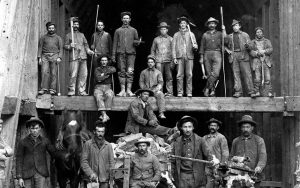 It is in times of greatest need, that people seem to best show that they can pull together to accomplish the greatest tasks. During World War I, the city of Butte, Montana was already a unionized industrial city with a population of 91,000 people. The city was home to one of the largest mining operations in the world. Butte was home to a copper mine system consisting of the Granite Mountain and Speculator Mines, and because of the heightened need for copper at that time, the abundance of employment opportunities drew workers from every corner of the world. The influx of people from other corners meant that more than 30 languages were spoken among the city streets. “No Smoking” signs posted in the mines were printed in 16 different languages, so that there was no mistaking the dangers.
It is in times of greatest need, that people seem to best show that they can pull together to accomplish the greatest tasks. During World War I, the city of Butte, Montana was already a unionized industrial city with a population of 91,000 people. The city was home to one of the largest mining operations in the world. Butte was home to a copper mine system consisting of the Granite Mountain and Speculator Mines, and because of the heightened need for copper at that time, the abundance of employment opportunities drew workers from every corner of the world. The influx of people from other corners meant that more than 30 languages were spoken among the city streets. “No Smoking” signs posted in the mines were printed in 16 different languages, so that there was no mistaking the dangers.
In April of 1917, the United States’ involvement in World War I was in its fourth month, and Butte mines increased their production of copper by operating around the clock, working the 14,500 miners like mules in order to meet the ever increasing demand. Unfortunately, this also brought steadily deteriorating safety conditions. Many of the miners were sleeping in shifts, so the beds in the boarding houses often never went cold. Despite these demanding work conditions, Butte miners worked with a pride and determination seldom found above ground, let alone a half-mile below the surface of the earth. They felt the weight of their duty to the war effort, and they gladly performed their jobs to the best of their abilities. Each day, the men were lowered into the mine, and the previous crew was brought out.
On the evening of June 8, 1917, 410 men were lowered into the Granite Mountain shaft to begin another backbreaking night shift. The exiting day shift had been tasked with the process of lowering a three-ton electric 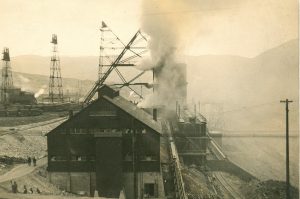 cable down the shaft to complete work on a sprinkler system designed to protect the mine against fire. All seemed to be going well, but at 8:00 pm the cable slipped from its clamps. As it fell into a tangled coil below the 2400 foot level of the mine, the lead covering was torn away. The torn covering exposed a large portion of oiled paraffin paper, which was used to insulate the cable. Unfortunately, the oiled paraffin paper was also highly flammable. At 11:30 pm four men went down to examine the cable. One of the men accidentally touched his handheld carbide lamp to the oiled paraffin insulation, which immediately ignited. The flame spread quickly to the shaft timbers. The Granite Mountain and Speculator shafts immediately filled with thick, toxic smoke.
cable down the shaft to complete work on a sprinkler system designed to protect the mine against fire. All seemed to be going well, but at 8:00 pm the cable slipped from its clamps. As it fell into a tangled coil below the 2400 foot level of the mine, the lead covering was torn away. The torn covering exposed a large portion of oiled paraffin paper, which was used to insulate the cable. Unfortunately, the oiled paraffin paper was also highly flammable. At 11:30 pm four men went down to examine the cable. One of the men accidentally touched his handheld carbide lamp to the oiled paraffin insulation, which immediately ignited. The flame spread quickly to the shaft timbers. The Granite Mountain and Speculator shafts immediately filled with thick, toxic smoke.
There was a mad scramble to find a way of escape. Just over half of the men working in the Granite Mountain shaft were able to find an escape to the surface. One group of 29 men built a bulkhead to isolate themselves from the smoke and gas. They stayed there for 38 hours before making their way to safety. At the 2254 foot level, another group of 8 men were found behind a makeshift bulkhead over 50 hours from the start of the fire. Two of these men died shortly before their rescue, but the other six were recovered safely. Though the intensity of the fire cannot be disputed, only two men were actually burned to death in a rescue attempt at the onset of the blaze. The rest were simply trapped and overcome by the noxious, suffocating fumes. By the close of the rescue operation on June 16, 1917, eight days after the fire had begun, the death toll had reached its final tally of 168 men.
The Granite Mountain and Speculator Mine Fire was the worst disaster in metal mining history. And we could leave it at that, but then we would be overlooking a remarkable accomplishment…the rescue mission. Over the  course of just 7 days, rescue crews succeeded in searching over 30 miles of drifts and crosscuts, and at least 15 miles of stopes, raises, and manways. Townspeople turned out in droves to help in whatever way the could. All this was done in mine shafts saturated with carbon monoxide and dense, tar-laden smoke. In all, 155 bodies were recovered and removed, all without the loss of a single rescue worker. Despite the tremendous damage the fire caused to the Granite Mountain Mine, it did not stop the work being done there. Copper ore continued to be mined until the mine’s close in 1923. The Butte mines produced the copper that helped electrify America and win World War I. Through this horrible tragedy, Butte received a very special moniker. The city was being called “The Richest Hill on Earth, referencing the soul and determination of the community, rather than the value of the ore beneath its feet.”
course of just 7 days, rescue crews succeeded in searching over 30 miles of drifts and crosscuts, and at least 15 miles of stopes, raises, and manways. Townspeople turned out in droves to help in whatever way the could. All this was done in mine shafts saturated with carbon monoxide and dense, tar-laden smoke. In all, 155 bodies were recovered and removed, all without the loss of a single rescue worker. Despite the tremendous damage the fire caused to the Granite Mountain Mine, it did not stop the work being done there. Copper ore continued to be mined until the mine’s close in 1923. The Butte mines produced the copper that helped electrify America and win World War I. Through this horrible tragedy, Butte received a very special moniker. The city was being called “The Richest Hill on Earth, referencing the soul and determination of the community, rather than the value of the ore beneath its feet.”
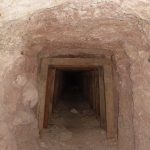
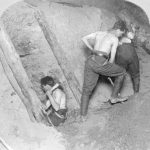 World War I found the British Army with a big problem. The German 4th Army was deeply entrenched at Messines Ridge in northern France, and the British had to remove them…somehow. The British came up with a plan, and for the 18 months prior to June 7, 1917, soldiers had been secretly working to place nearly 1 million pounds of explosives in tunnels under the German positions. The tunnels extended to some 2,000 feet in length, and some were as much as 100 feet below the surface of the ridge, where the German stronghold positions were located. The plan was put into action by the British 2nd Army under the supervision of General Sir Herbert Plumer. The joint explosion of the mines at Messines ranks among the largest non-nuclear explosions of all time. The evening before the attack, General Sir Charles Harington, Chief of Staff of the Second Army, remarked to the press, “Gentlemen, I don’t know whether we are going to make history tomorrow, but at any rate we shall change geography”.
World War I found the British Army with a big problem. The German 4th Army was deeply entrenched at Messines Ridge in northern France, and the British had to remove them…somehow. The British came up with a plan, and for the 18 months prior to June 7, 1917, soldiers had been secretly working to place nearly 1 million pounds of explosives in tunnels under the German positions. The tunnels extended to some 2,000 feet in length, and some were as much as 100 feet below the surface of the ridge, where the German stronghold positions were located. The plan was put into action by the British 2nd Army under the supervision of General Sir Herbert Plumer. The joint explosion of the mines at Messines ranks among the largest non-nuclear explosions of all time. The evening before the attack, General Sir Charles Harington, Chief of Staff of the Second Army, remarked to the press, “Gentlemen, I don’t know whether we are going to make history tomorrow, but at any rate we shall change geography”.
On June 7, 1917, they were ready to carry out their secret attack. The explosions created 19 large craters. It would be a crushing victory over the Germans who had no idea of the impending disaster they were about to face. This attack would mark the successful beginning of an Allied offensive designed to break the grinding stalemate on the Western Front in World War I. The time of the attack was set for 3:10am. Precisely on schedule, a series of simultaneous explosions rocked the area. The blast from the detonation of all those landmines was heard as far away as London. A German observer described the explosions, “nineteen gigantic roses with carmine petals, or enormous mushrooms, rose up slowly and majestically out of the ground and 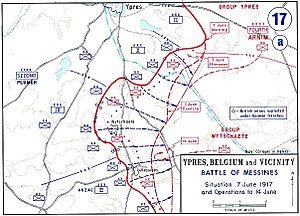
 then split into pieces with a mighty roar, sending up multi-colored columns of flame mixed with a mass of earth and splinters high in the sky.” German losses that day included more than 10,000 men who died instantly, along with some 7,000 prisoners…men too stunned and disoriented by the explosions to resist the infantry assault.
then split into pieces with a mighty roar, sending up multi-colored columns of flame mixed with a mass of earth and splinters high in the sky.” German losses that day included more than 10,000 men who died instantly, along with some 7,000 prisoners…men too stunned and disoriented by the explosions to resist the infantry assault.
Although Messines Ridge battle was, itself was a relatively limited victory, it had a considerable effect on the German morale. The Germans were forced to retreat to the east, a sacrifice that marked the beginning of their gradual, but continuous loss of territory on the Western Front. It also secured the right flank of the British thrust towards the highly contested Ypres region, which was the eventual objective of the planned offensive. Over the next month and a half, British forces continued to push the Germans back toward the high ridge at Passchendaele, which on July 31 saw the launch of the British offensive known as the Battle of Passchendaele. The Battle of Messines marked the high point of mine warfare. On August 10, 1917, the Royal Engineers fired the last British deep mine of the war, at Givenchy-en-Gohelle near Arras.
The explosions left a mine crater 40 feet deep. The attack had done its job. Still, after the war was over, the crater remained, and some wanted to change the “feel” of the place. Nowadays, this mine crater is a serene, contemplative place. I’m sure that many who visit there feel the significance of the location, but also know just  how necessary it was to ensure the freedom of France from the tyranny of the German forces. Named The Pool of Peace, it is a 40 foot deep lake near Messines, Belgium. It fills one of the craters made in 1917 when the British detonated a mine containing 45 tons of explosives. The pool stretches 423 feet across, and remains a place of solace that receives many visitors every year. It seems to me that, while most of those killed in the mine fields on June 7, 1917, were Germans, and therefore, the enemy, they were also people, many of whom didn’t want to be there any more than the Allies did. They were there under orders, and that was all there was to it. For that reason, I believe that place should be, finally, a place of peace.
how necessary it was to ensure the freedom of France from the tyranny of the German forces. Named The Pool of Peace, it is a 40 foot deep lake near Messines, Belgium. It fills one of the craters made in 1917 when the British detonated a mine containing 45 tons of explosives. The pool stretches 423 feet across, and remains a place of solace that receives many visitors every year. It seems to me that, while most of those killed in the mine fields on June 7, 1917, were Germans, and therefore, the enemy, they were also people, many of whom didn’t want to be there any more than the Allies did. They were there under orders, and that was all there was to it. For that reason, I believe that place should be, finally, a place of peace.
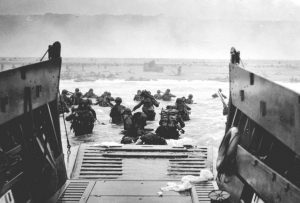 Most people from the Baby Boomer Generation know the significance of D-Day, but it occurs to me that many people in the younger generations may not really know what it was all about. Operation Overlord was the Allied invasion of northern France, commonly known as D-Day. The operation was under the direction of Supreme Allied Commander General Dwight D. Eisenhower. The operation had a brief 3 day window in which to take place, and June 5th had been chosen to be the day, but the day dawned gloomy, so the operation had to be scrubbed for the day.
Most people from the Baby Boomer Generation know the significance of D-Day, but it occurs to me that many people in the younger generations may not really know what it was all about. Operation Overlord was the Allied invasion of northern France, commonly known as D-Day. The operation was under the direction of Supreme Allied Commander General Dwight D. Eisenhower. The operation had a brief 3 day window in which to take place, and June 5th had been chosen to be the day, but the day dawned gloomy, so the operation had to be scrubbed for the day.
Then on June 6th, the orders came down that Operation Overlord was a go. By daybreak, 18,000 British and American parachutists were already on the ground. An additional 13,000 aircraft were mobilized to provide air cover and support for the invasion, among them the B-17, Raggedy Ann, which was carrying my dad, Allen Spencer, who was a Top Turret Gunner and Flight Engineer. At 6:30 am, American troops came ashore at Utah and Omaha beaches. The British and Canadians overcame light opposition to capture Gold, Juno and Sword beaches, as did the Americans at Utah. Omaha beach was a much different situation, however, where the US First Division battled high seas, mist, mines, burning vehicles, and German coastal batteries, including an elite infantry division, which spewed heavy fire. Many wounded Americans ultimately drowned in the high tide. British divisions, which landed at Gold, Juno, and Sword beaches, and Canadian troops also met with heavy German fire.

The troops persevered, even though the loses were great, and in the end the operation was declared a victory. There were many reasons that D-Day was successful, even against all odds. The Allies had fooled the Germans, who thought the attack was going to occur farther along the coast at Calais because this was the shortest route by sea, even when the attack began on the beaches Hitler was still convinced the attack was going to occur at Calais. What a shock that must have been when he found out that the attack took place on the beaches of Normandy. False intelligence spread by the allies spread false information to the Germans, and they bought it.
There were many factors that all worked together to make the plan work. Wooden guns on the South Coast of England, wooden planes, dropped plastic dummies out of planes, they put mirrors up on their ships and the Germans were fooled as they saw themselves going the other way. New technology specifically designed for the landing enabled the Allies to gain an advantage over the Germans. Mulberries, the floating docks the Allies used to land, enabled the Allies to land safely and disembark while firing. Some of the beaches were practically empty, however, on Omaha beach the Allies suffered heavy losses numbering 2000 in total. Operation Overlord had been planned for many years and so they were ready. The Germans had to keep control of the other parts of their empires, so their troops were elsewhere. Hitler denied that his forces were losing in Normandy, and  would not authorize the mobilization of forces stationed near Normandy.
would not authorize the mobilization of forces stationed near Normandy.
As for the Allies, the troops involved were highly trained, equipped and motivated. Their battle plan was well prepared. All the necessary manpower and logistics were available to them. The air space was controlled by the Allies. The sea lanes were very short and the seas were in Allied hands. The deception plan was flawless. The Germans had no idea what was coming. The French Resistance was highly effective. The German troop who were there were poorly motivated. Hitler’s Defense Planning was completely flawed. But, the biggest victory is that the troops did their job.

